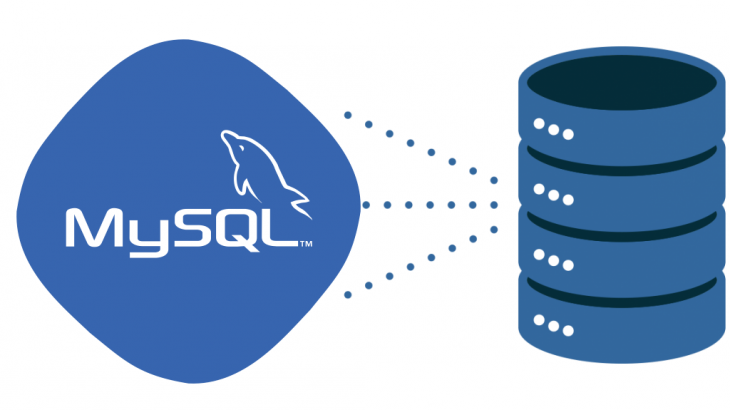Mastering the Art of Integrating MySQL with PHP, Python, and Java for Dynamic Web Applications
The combination of a powerful database management system like MySQL with popular programming languages like PHP, Python, and Java opens up endless possibilities for creating dynamic and data-driven web applications. Mastering the art of integrating MySQL with these languages can greatly enhance your development skills and enable you to build robust and scalable applications. In this blog post, we will explore the fundamentals of integrating MySQL with PHP, Python, and Java, and provide you with practical tips and techniques to excel in this area.
I. Understanding MySQL
Before diving into the integration process, let’s briefly revisit MySQL. MySQL is a widely used relational database management system known for its performance, scalability, and ease of use. It provides a rich set of features for managing structured data and allows efficient querying and manipulation of databases. With its support for multiple programming languages, MySQL serves as a popular choice for web development.
II. Integrating MySQL with PHP
PHP is a server-side scripting language that seamlessly integrates with MySQL, making it a dominant combination for web development. To integrate MySQL with PHP, follow these steps:
- Installing and configuring PHP: Ensure that PHP and MySQL are installed on your system, and configure PHP to work with MySQL.
- Establishing a database connection: Use PHP’s MySQLi or PDO extension to establish a connection to the MySQL database. Specify the hostname, username, password, and database name in the connection parameters.
- Executing queries: Utilize PHP’s MySQL functions or prepared statements to execute SQL queries against the MySQL database. Retrieve and manipulate data using SELECT, INSERT, UPDATE, DELETE, and other SQL statements.
- Handling errors: Implement error handling mechanisms to catch and handle any database-related errors that may occur during the execution of queries.
III. Integrating MySQL with Python
Python, with its simplicity and versatility, is an excellent language for integrating with MySQL. To integrate MySQL with Python, follow these steps:
- Installing the required modules: Ensure that the MySQL connector module is installed. You can use pip, Python’s package manager, to install the necessary modules.
- Establishing a database connection: Import the MySQL connector module in your Python script and use it to establish a connection to the MySQL database. Provide the hostname, username, password, and database name while creating the connection object.
- Executing queries: Utilize the connection object’s methods to execute SQL queries against the MySQL database. Retrieve and manipulate data using SELECT, INSERT, UPDATE, DELETE, and other SQL statements.
- Handling exceptions: Wrap the database operations in try-except blocks to handle any exceptions that may occur during the execution of queries. It is essential to gracefully handle errors to ensure the stability of your application.
IV. Integrating MySQL with Java
Java, a powerful and widely adopted programming language, offers robust libraries and frameworks for integrating with MySQL. To integrate MySQL with Java, follow these steps:
- Installing the required libraries: Download and install the MySQL Connector/J library, which provides the necessary classes and methods to interact with the MySQL database.
- Establishing a database connection: Import the required classes from the MySQL Connector/J library and use them to establish a connection to the MySQL database. Provide the hostname, username, password, and database name while creating the connection object.
- Executing queries: Utilize the connection object’s methods to execute SQL queries against the MySQL database. Use Statement or PreparedStatement to execute queries and ResultSet to retrieve and manipulate data.
- Resource management: Properly close database connections, statements, and result sets to release system resources. Failing to do so can lead to resource leaks and performance issues.
Boost Your Productivity: 10 Essential Chrome Extensions for Student Homework Management
As you become more proficient in integrating MySQL with PHP, Python, and Java, consider diving deeper into topics such as:
- Database normalization: Understanding how to design efficient and well-structured database schemas using normalization techniques will optimize your application’s performance and scalability.
- Database optimization: Learn about indexing, query optimization, and caching mechanisms to improve the speed and efficiency of your database operations.
- Object-Relational Mapping (ORM): Explore ORM frameworks like Laravel’s Eloquent (PHP), Django’s ORM (Python), and Hibernate (Java), which provide an abstraction layer over the database, simplifying data manipulation and enhancing productivity.
- Security best practices: Familiarize yourself with SQL injection prevention techniques, data encryption, and user authentication to safeguard your application’s data and protect against malicious attacks.
- Scaling and replication: Gain knowledge of MySQL’s replication capabilities and techniques for scaling your application to handle increasing traffic and data volumes.
Additionally, keep up with the latest updates and developments in MySQL, PHP, Python, and Java to stay informed about new features and improvements that can further enhance your integration skills.
Remember, mastering the art of integrating MySQL with PHP, Python, and Java is an ongoing journey. Continuously learning, experimenting, and seeking out new challenges will enable you to become a proficient and versatile developer in the database-driven application space.
Mastering the art of integrating MySQL with PHP, Python, and Java is a valuable skill that empowers developers to create robust and data-driven applications. In this blog post, we explored the fundamentals of integrating MySQL with these languages and provided practical steps to get you started. By understanding the connection process, executing queries, and handling errors, you can harness the full potential of MySQL’s features and create dynamic and scalable applications. As you gain more experience and explore advanced techniques, you will be well on your way to becoming a proficient database-driven application developer.valuable skill that empowers developers to create robust and data-driven applications. However, integration with MySQL doesn’t stop at the basic steps outlined in this blog post. There is always room for growth and further exploration of advanced concepts and techniques.

